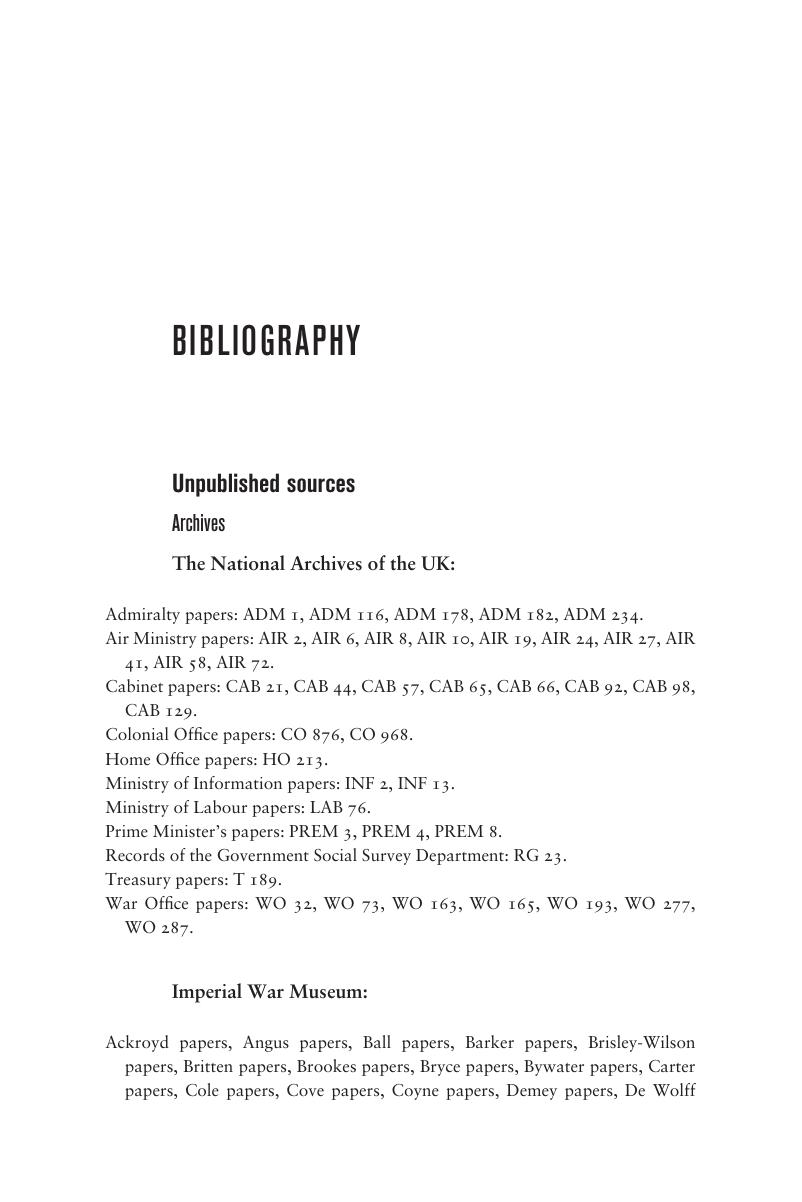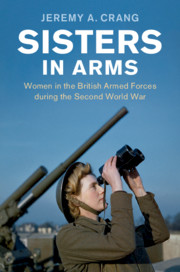Book contents
- Sisters in Arms
- Studies in the Social and Cultural History of Modern Warfare
- Sisters in Arms
- Copyright page
- Dedication
- Contents
- Figures
- Acknowledgements
- Prologue
- 1 Revival
- 2 Organisation and Recruitment
- 3 Training and Selection
- 4 Work
- 5 Status and Discipline
- 6 Necessities of Life
- 7 Medical Matters
- 8 Off Duty
- 9 Overseas Service
- 10 Demobilisation and the Creation of the Permanent Women’s Services
- Conclusion
- Notes
- Appendix
- Bibliography
- Index
- References
Bibliography
Published online by Cambridge University Press: 31 August 2020
- Sisters in Arms
- Studies in the Social and Cultural History of Modern Warfare
- Sisters in Arms
- Copyright page
- Dedication
- Contents
- Figures
- Acknowledgements
- Prologue
- 1 Revival
- 2 Organisation and Recruitment
- 3 Training and Selection
- 4 Work
- 5 Status and Discipline
- 6 Necessities of Life
- 7 Medical Matters
- 8 Off Duty
- 9 Overseas Service
- 10 Demobilisation and the Creation of the Permanent Women’s Services
- Conclusion
- Notes
- Appendix
- Bibliography
- Index
- References
Summary

- Type
- Chapter
- Information
- Sisters in ArmsWomen in the British Armed Forces during the Second World War, pp. 313 - 331Publisher: Cambridge University PressPrint publication year: 2020



